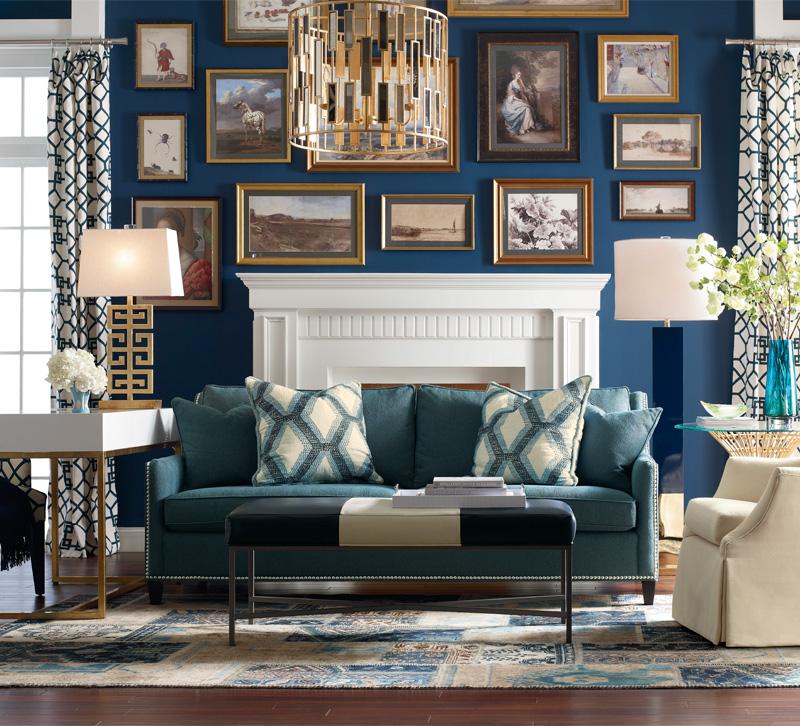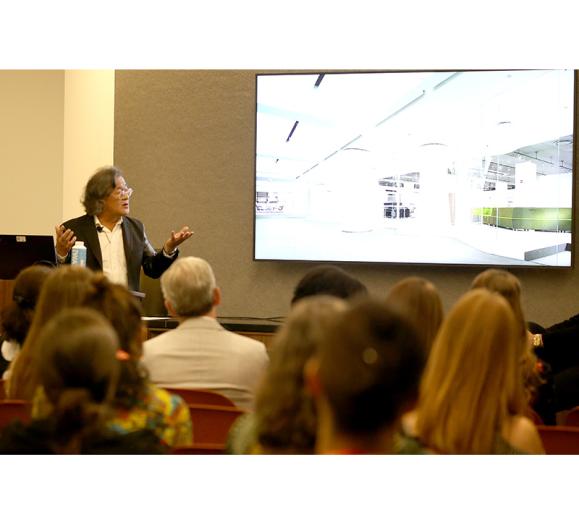As high-end furniture stores across the country continue to dwindle in numbers — falling victim to everything from changing tastes and lifestyles to increasing competition online — small, inviting boutiques that combine storefronts with thriving design studios and services are filling the void.
“There’s always going to be a need for the big-box furniture store because there are consumers out there who need furniture and need to have it financed,” says Chantal Lawrence, owner and licensed interior designer at Total Design Source in Old Saybrook, CT. “But the consumers that designers like myself are targeting appreciate a smaller boutique/studio because the shopping experience is more about them, and it comes with the reassurance that they are going in the right direction.”
Each less than 5,000-square-feet in size, the four shops profiled on these pages may be small enough to fit inside the average big-box furniture store (and we mean all at the same time), but when it comes to turning on today’s consumer, they pack a mighty punch. Seductive window displays lure both passersby and the design-curious, who once inside, are met by greetings warm enough to make them feel less like an “up,” and more like they’ve dropped in on a gathering of neighborhood friends.
The relatively diminutive footprints dictate the atmospheres are intimate, but the savvy designers behind these businesses ensure there is visual stimulation aplenty with intriguing vignettes created to inspire more questions than quick sales. No doubt the relaxed conversations that result are where these hybrid businesses are winning the better-end retail game and where designers like Lawrence are engaging and educating a new generation of consumers about the many benefits of working with a professional interior designer.
Gracefully Done, Northport, AL
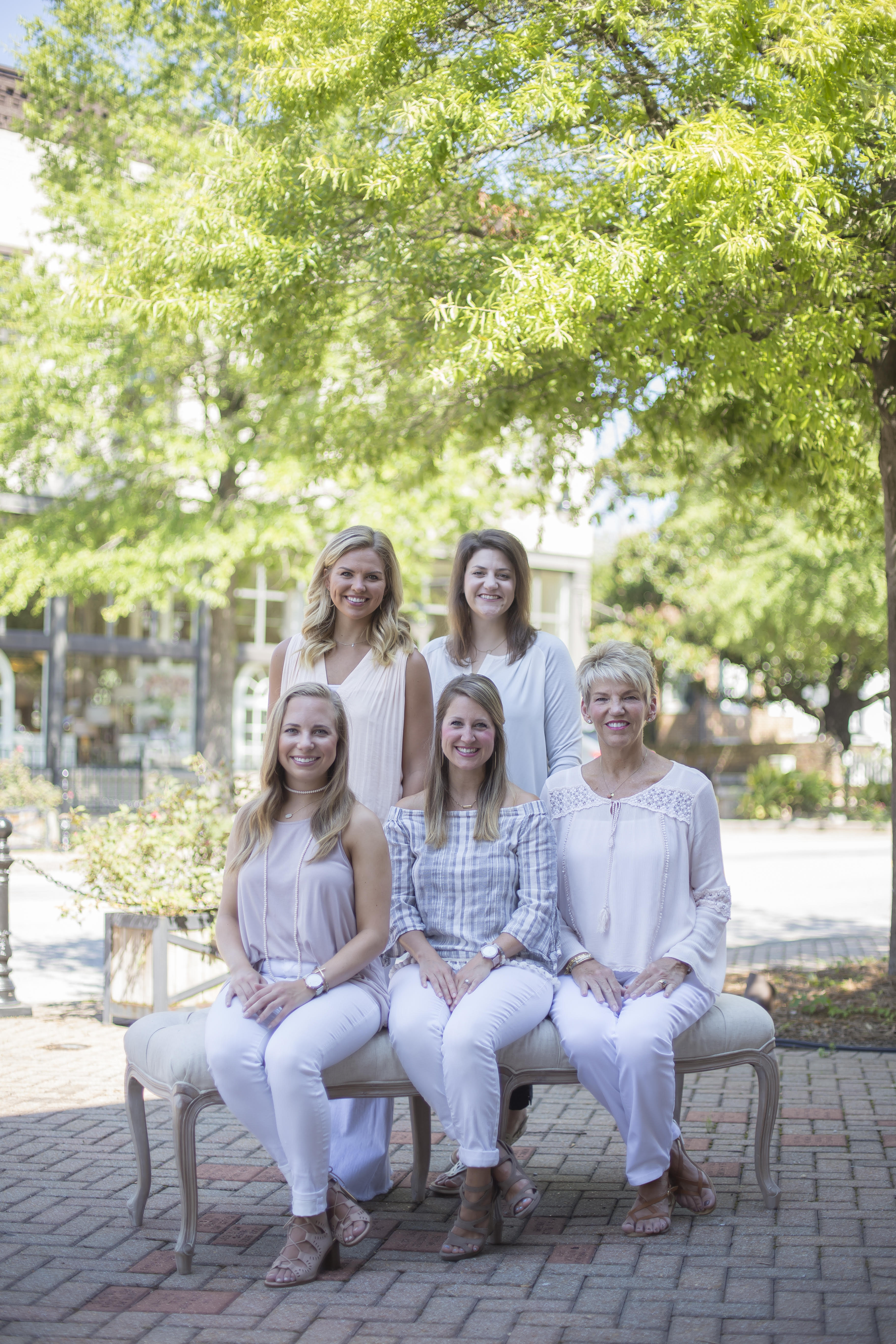
Collette Day, owner of Gracefully Done, a 5,000-square-foot business on Main Street of this historic college town, opened her shop in 2007 following her husband’s retirement and a move from the suburbs of Tennessee. “I was part of a similar business in Collierville, TN, and I decided to continue to do what I love,” she relates.
Good thing, considering that nearly everyday someone tells her they can’t pull their house together. “I tell them, ‘We’re so glad you can’t do it, because if you could, I would be out of a job,’” Day says with a laugh.
The interior designer cum shopkeeper attributes the success of her store-fronted design business to making everyone feel comfortable from the moment they enter. “We want everyone to believe they can afford an interior designer, so we don’t discriminate between small and big budgets. We do all sizes and I think that plays to our advantage. But mainly, we build relationships. Nobody ever leaves here without being spoken to because our business is built on word-of-mouth and referral.”
For that reason, she says, “We don’t hound people while they are looking around, but we definitely let them know we’re glad they came in. I always tell our people that if somebody spends a little bit of time in a particular vignette, they are there for a reason.”
Featuring lines like C.R. Laine, Holland House, the MT Company, Mayo, Hooker, Stanley, Furniture Classics and Woodbridge among others, each inviting vignette is painted a different color and offers a different point of view, from high-design at the front of the shop to a more rustic feel toward the back. “When you walk in, you can see what we’re about,” Day says. “I’m really big on the way the store looks and we keep changing it all the time. We’ve just been to market so the whole floor is flipping, and our customers can’t wait. They get as excited as we do about getting the new product out.”
But the most important difference here is that “we’re selling a service,” Day says. “We get a lot of customers who have tried to do their space on their own and failed, and we help them make it right. Of course we love to do whole-home projects, but not everybody can do their whole house at one time. Most people have some kind of constraint whether it’s time or money. The key is to make people comfortable with whatever they want to do. Our goal is to be a light in our community and people are drawn to that.”
Realm Furnishings & Design Studio, Babylon, NY
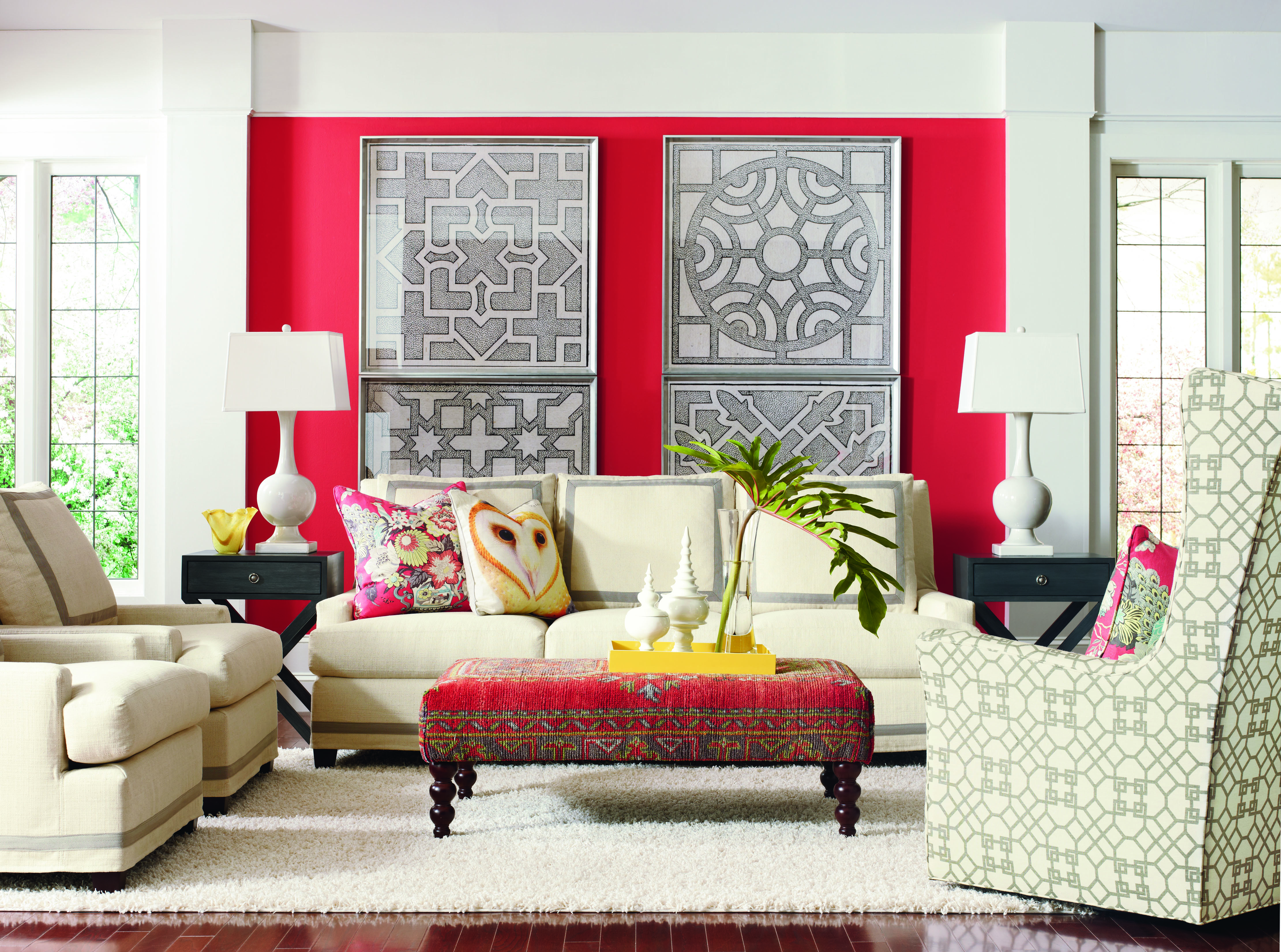
John Roccotagliata (aka John Rocco) believes the design services typically offered by traditional furniture stores are “very limited. They will go into a customer’s home and measure, but it’s mainly to ensure that the furniture being purchased will fit, that it will get through the front door and make turns. At Realm, we take it a few steps further, offering everything from flooring to window treatments to paint consults,” says the owner and lead designer. “If you’re moving a window, we’ll help you pick out the window. We go the extra mile, if not the extra five miles, because we can and have been educated to do so. We’re not fluffing pillows and throwing a shawl on the sofa and calling it fabulous. We’re designers.”
Located in Babylon Village on the South Shore of Long Island, Realm is a set apart by a crisp coastal feel which Rocco says the surrounding community embraced immediately. The veteran designer/retailer makes the most of the shop’s glass façade by changing displays in the front windows every 45 days. “My windows are so spectacular I have people constantly walking in off the street, and there’s always new merchandise to see because I’m turning over the front of the store so often,” he says.
As far as moving customers beyond purchasing items to design projects, “nobody ever asks us about design services, we ask them,” Rocco relates. “We always greet them with ‘Hello, how are you today?’ and as they are looking at something we tell them, ‘The sofa as you see it is not the only way you can get it. We have some 3,000 fabrics and skins available, and we can change the frame size or the depth, add pillows or take away pillows. We can change the color of the leg and we offer three or four different styles of skirt. Cushions can come three over three, two over two, a bench over two…there’s really nothing we can’t do to accommodate the particular look, need or feel that you want to go home with.’” And, when shoppers admit they are not really sure what their look is, Rocco offers them a design consult, which ranges from $500 to $1,000, and the fee is applied toward their purchase.
Featuring names like Lexington Home Brands, Bungalow 5, Worlds Away, Braxton Culler and C.R. Laine, Rocco says the 4,000-square-foot boutique “offers something for everybody. Consumers today are saturated with media and catalogs like Front Gate showing all these fantastic things for inside and out, but they don’t know how to pull it all together. I strongly believe that people need to sit, touch, feel and see how the product is constructed, and that’s impossible to achieve when you’re looking at a catalog or purchasing product online.” In contrast, he likens the big-box furniture buying experience to something of a conveyor belt, with salespeople selling complete room settings in three sizes whether that’s what the customer needs or not. “In our shop, the product is high-quality and our approach is that however long it takes to make you happy and your room complete with all the finishing touches, we’ll be here for you start to finish.”
Total Design Source, Old Saybrook, CT
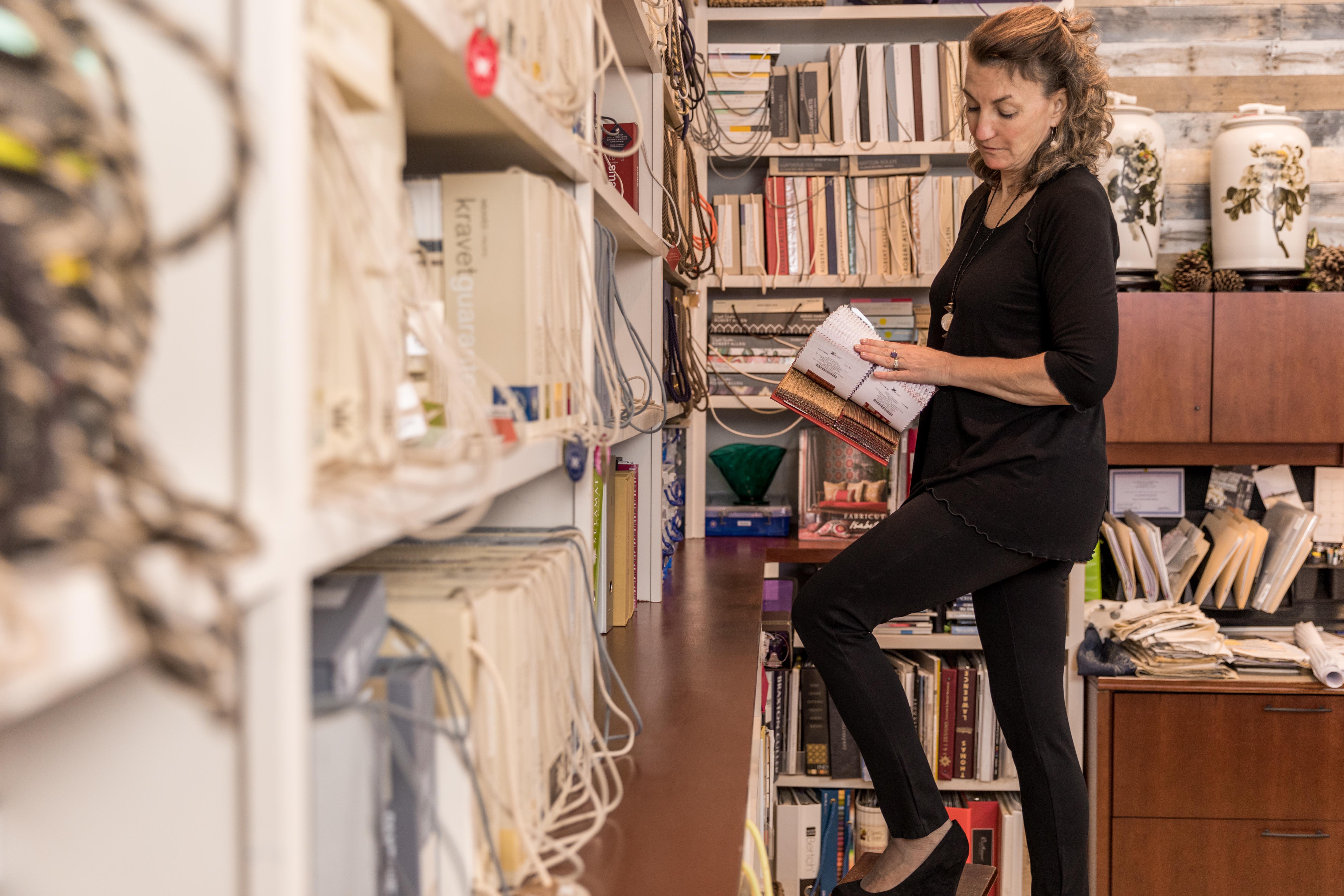
“You’re always putting your best foot forward when anybody walks through the door,” says Lawrence, “because the retail is really just a ploy to get design business.”
Burned out from the high-energy interior architecture projects she undertook for major New York City-based firms and a stint as a sales representative for Metropolitan Furniture (the high-end wood division of Steelcase), Lawrence was tired of commuting. “I started my own little design business and everything was going great,” she says. “Then one day I was sitting here working on a design and I thought, ‘I might as well be selling things.’ The area that we live in is on the shoreline, about two hours from Boston, and two hours from New York, and it’s a fairly affluent community, but at that point, there wasn’t a resource here for good, quality design, accessories, art and interior objects.”
The recession hit just after she opened her doors on Main Street. “My husband is a general contractor so his work came to a screeching halt, and my architecture and design work came to a halt. I put a huge amount of money into this store, so it was a real struggle, but it taught me a lot about planting seeds. I was always just being as courteous and friendly as I could, and going out of my way to satisfy tiny requests. During that period my carpet installer and I would say, ‘Thank God for old dogs,’ because during the recession people wouldn’t spend a dime on themselves, but if their dog could not get up the stairs, they would put carpeting in.” Lawrence also set herself apart by offering fabric yardage for purchase, and by providing plenty of eye candy when they came in, focusing on high-end product that cannot be readily acquired via the internet.
All the seeds eventually germinated and these days, both the 2,200-square-foot boutique and her design business are thriving. A serene environment with pops of color, the shop feels surprisingly spacious despite the small size. “It’s very well laid out and inviting,” Lawrence describes, “and everything is placed to give you enough time to look around the room and approach things without being overwhelmed.”
With an ever-changing window display, “people come in the shop to find out what it’s all about,” she says. “I show wallpaper and a window treatment in the window with some really pretty accessories to highlight them, so sometimes they are intrigued by a particular object, or they simply want to see what else is in here. The reference to the wallpaper definitely speaks to people who are interested in home projects and sprucing up their homes.”
Once inside, visitors are often drawn to the inspiration boards lining one wall. “We use the boards to tell a story about the different materials that are out there, to provide a little education and as conversation starters. Then we provide them with a brochure, a design menu that gives them an idea about the different types of consultation that we offer. We want them to know that design can be fun and it is possible to have a designer that can create a home that’s all about you.”
Wiseman and Gale, Scottsdale, AZ
A design studio fronted by a showroom is not a new concept for Wiseman and Gale. “To me, the idea of storefronts is really an old-school concept that we’re circling back to because the interior designer’s ability to make money in our industry has slowly been picked away at throughout the past 10 years,” says the firm’s managing partner Scott Burdick. “This is not to say that design centers don’t serve an amazing purpose and we’re better for having them, but they have inserted themselves as an additional layer between vendors, designers and their clients.
“There was also a period of time when the industry was pushing interior design firms to simply charge design fees and not make money on product,” Burdick relates. “Luxury residential product is complicated, and if an uneducated consumer is purchasing it directly from a vendor or a showroom, they make mistakes. But I think we’re back to the idea that the interior designer should sell the product to the client, because if the client is unhappy, they are going to come back to the interior designer to fix it, regardless of who sold it to them. This is part of the reason that we’re seeing the rise of smaller showrooms and designers becoming retailers again.”
Burdick points out that Wiseman and Gale has been structured in this manner for 55 years. “We’ve got a big book of business and our long-term client base is used to the way we work. So as the industry changes, we kind of put our blinders on and do our work, and at the end of the day, our clients are happy. In periods of time when then industry didn’t want to do retail, we powered through it, and we’re back to it because it’s really easy to sell retail these days.”
Nine residential interior designers and six design assistants work out of the 4,800-square-foot downtown building, and the product filling the showroom space is mainly antiques, fine accessories and upholstery pieces, “things that we’re buying for our clients as the finishing layer of our design projects. Consumers who walk in treat us like an antiques store. They typically have an interior designer somewhere else and they find something that they love, send them a picture, and then we ship it. We also sell directly to the consumer on First Dibs as well.”
In terms of competing with traditional retailers, Burdick says, “Our designs are 100 percent custom tailored to the client, and they are coming to us for the design. They want us to put it together for them and we can do it on multiple levels. We can do it at the Pottery Barn level, or we can do it at the Holly Hunt level, but they are coming to us for a finished house with all the services that requires. Full-service luxury residential is as vibrant as it’s ever been. Clients have made the mistakes, buying at wholesale or shopping online or at traditional retail to try and put their houses together. There’s been an evolution, and the value that you get for hiring an interior designer is winning right now.”



